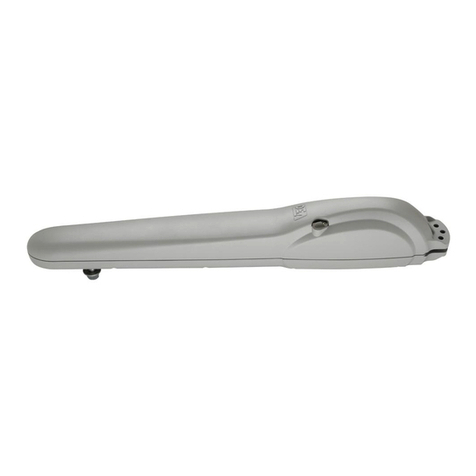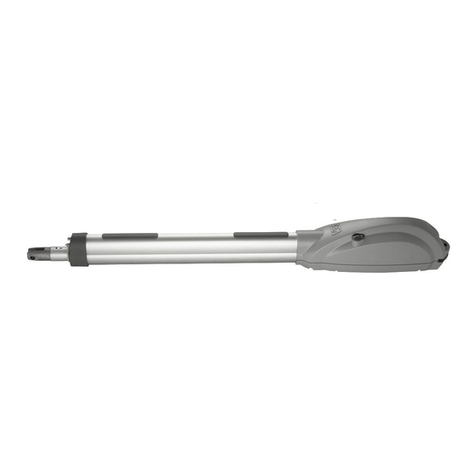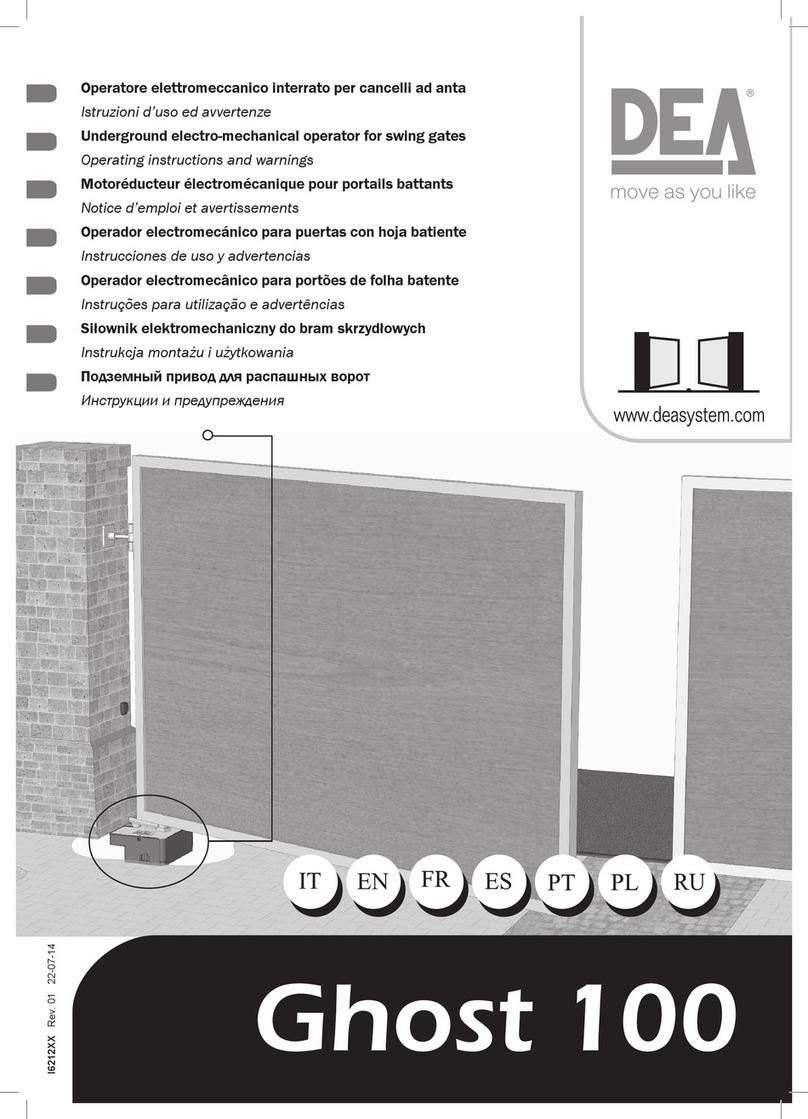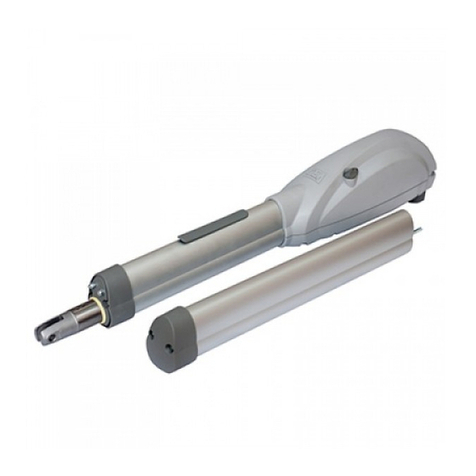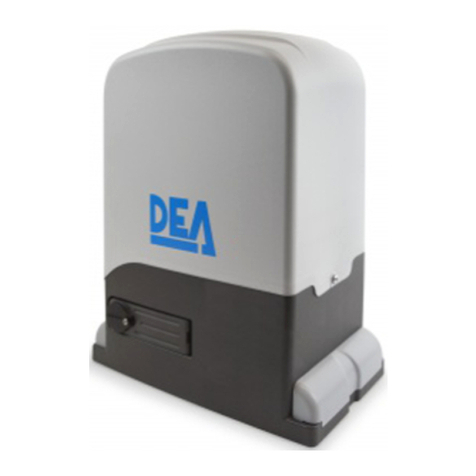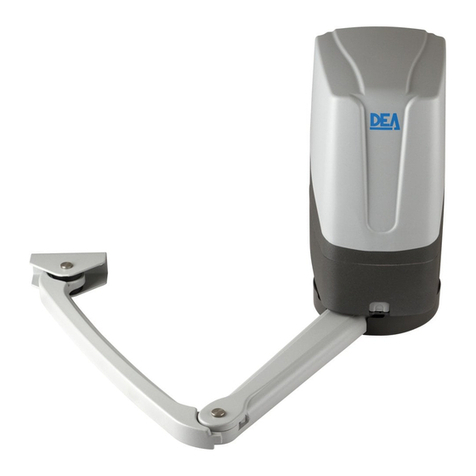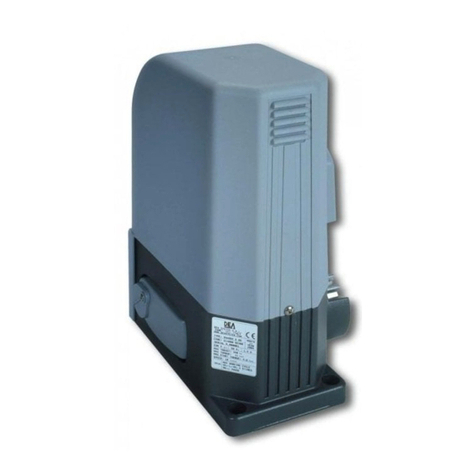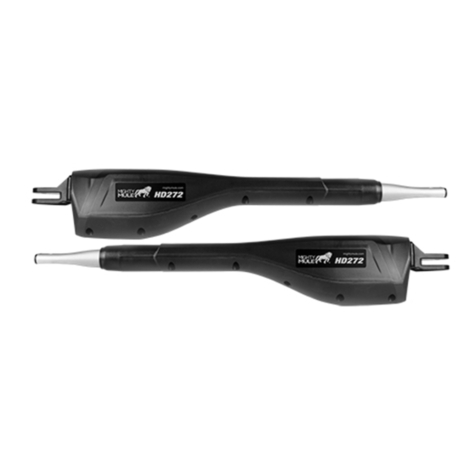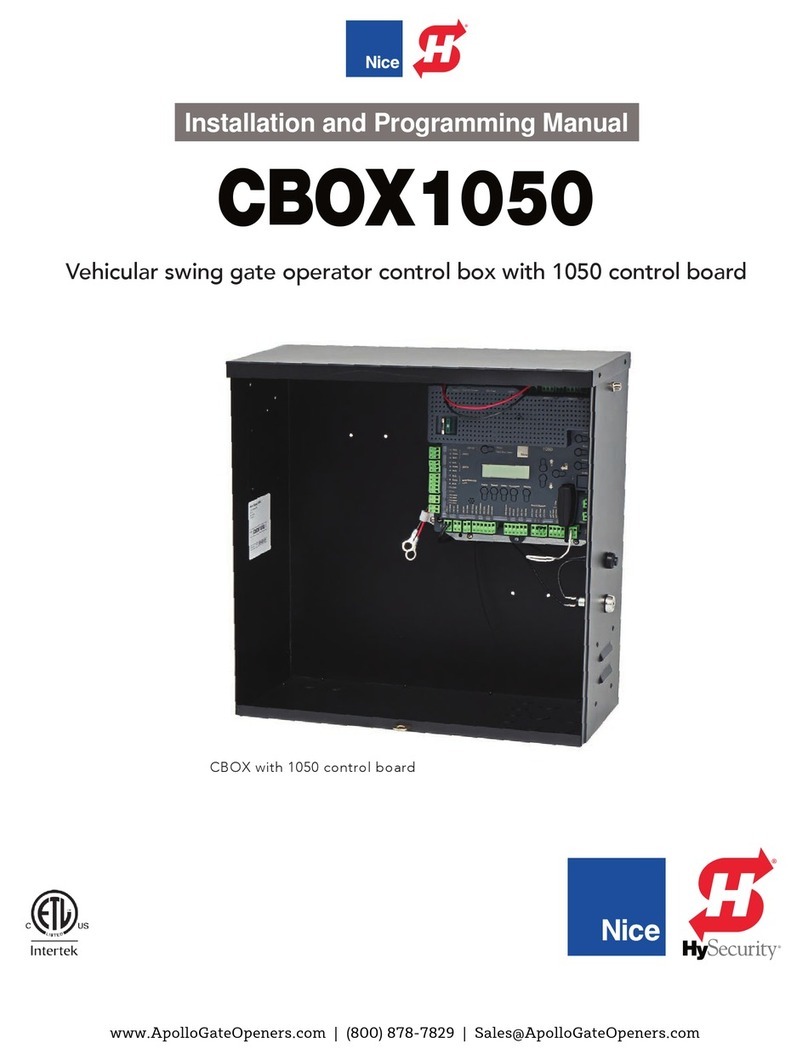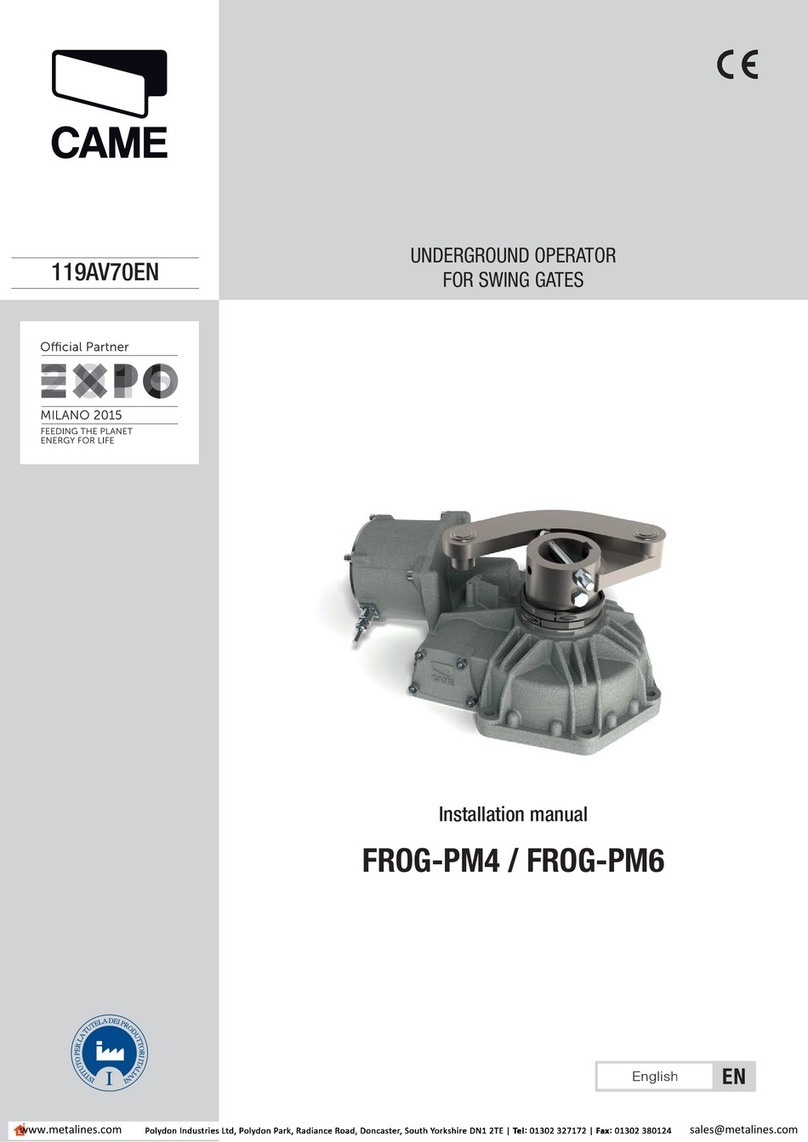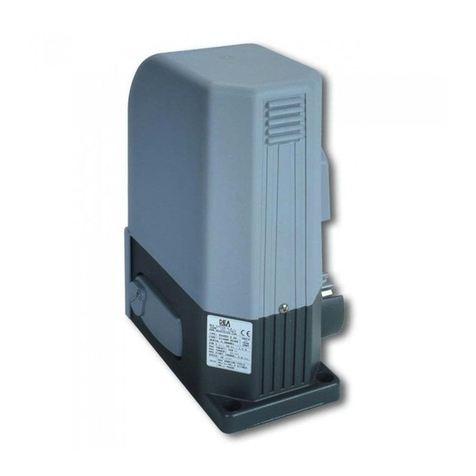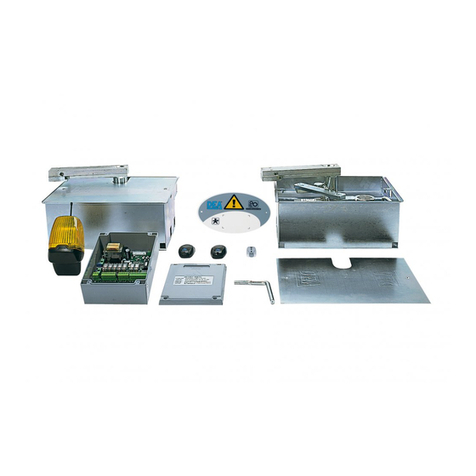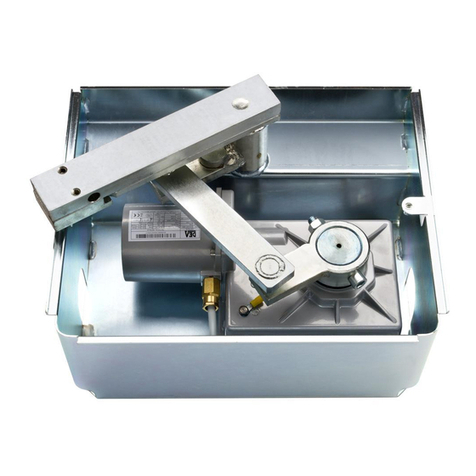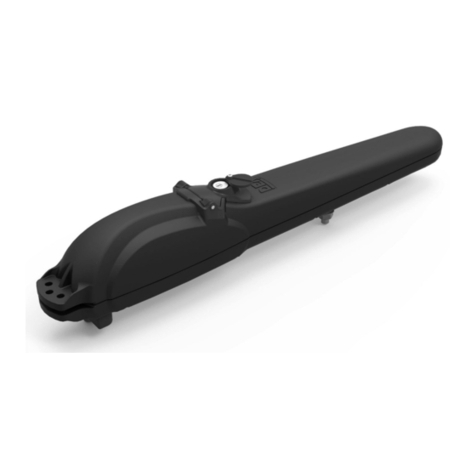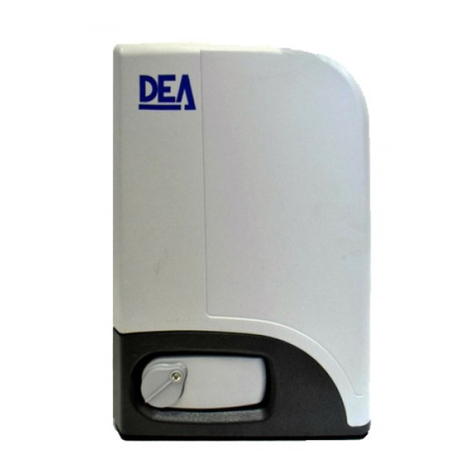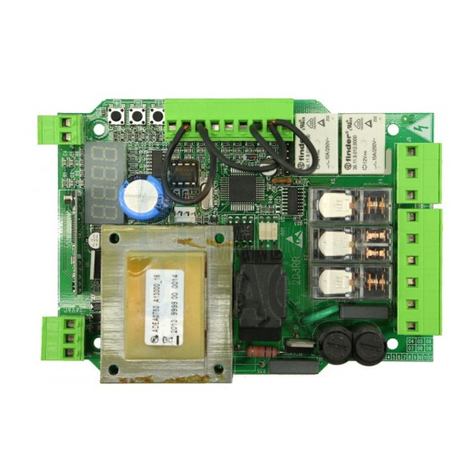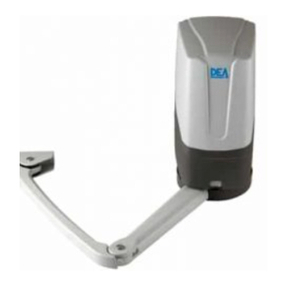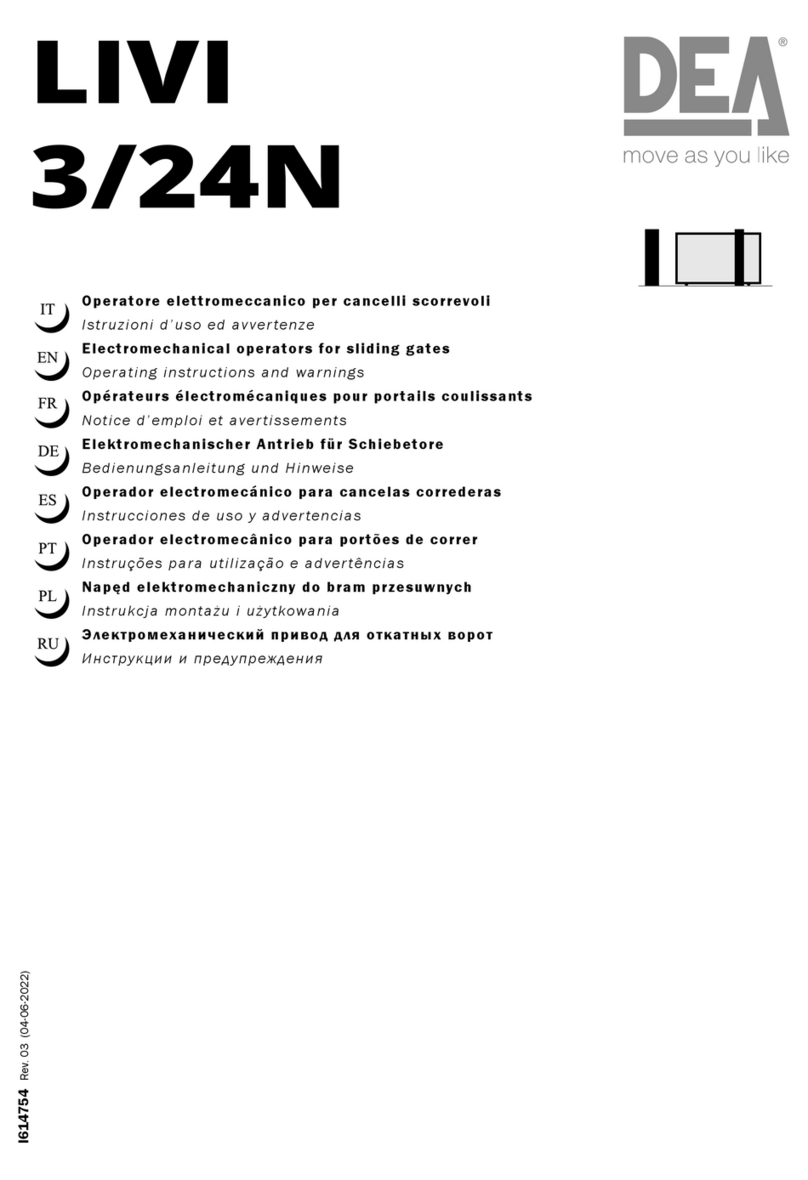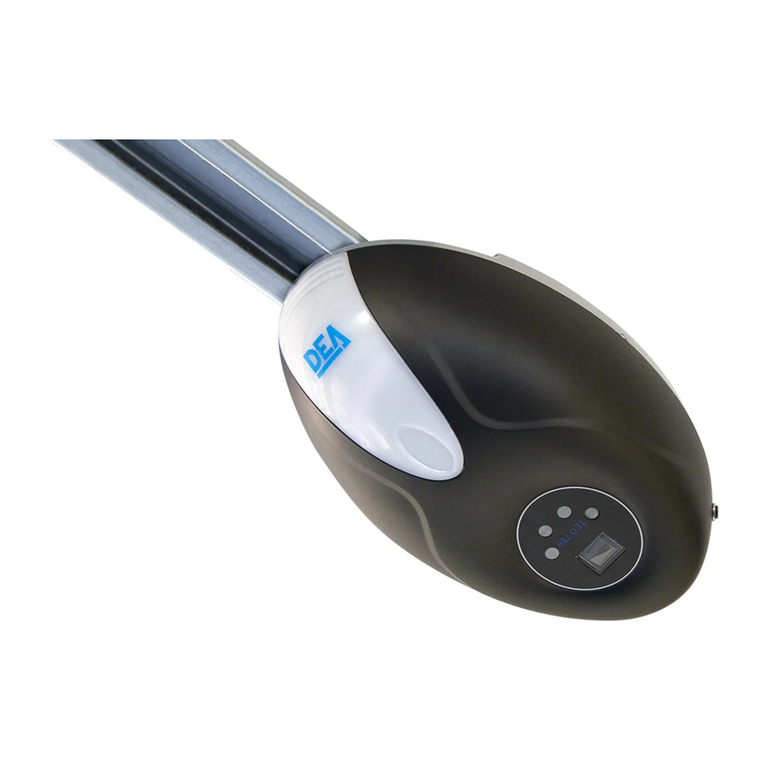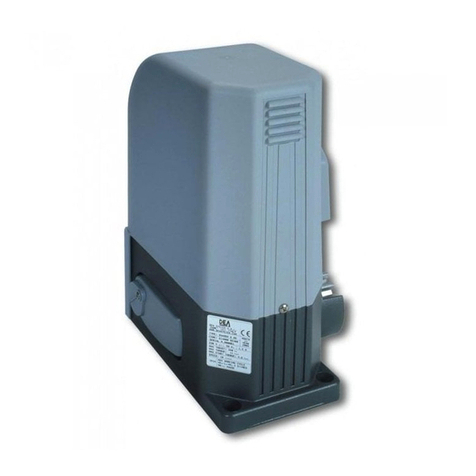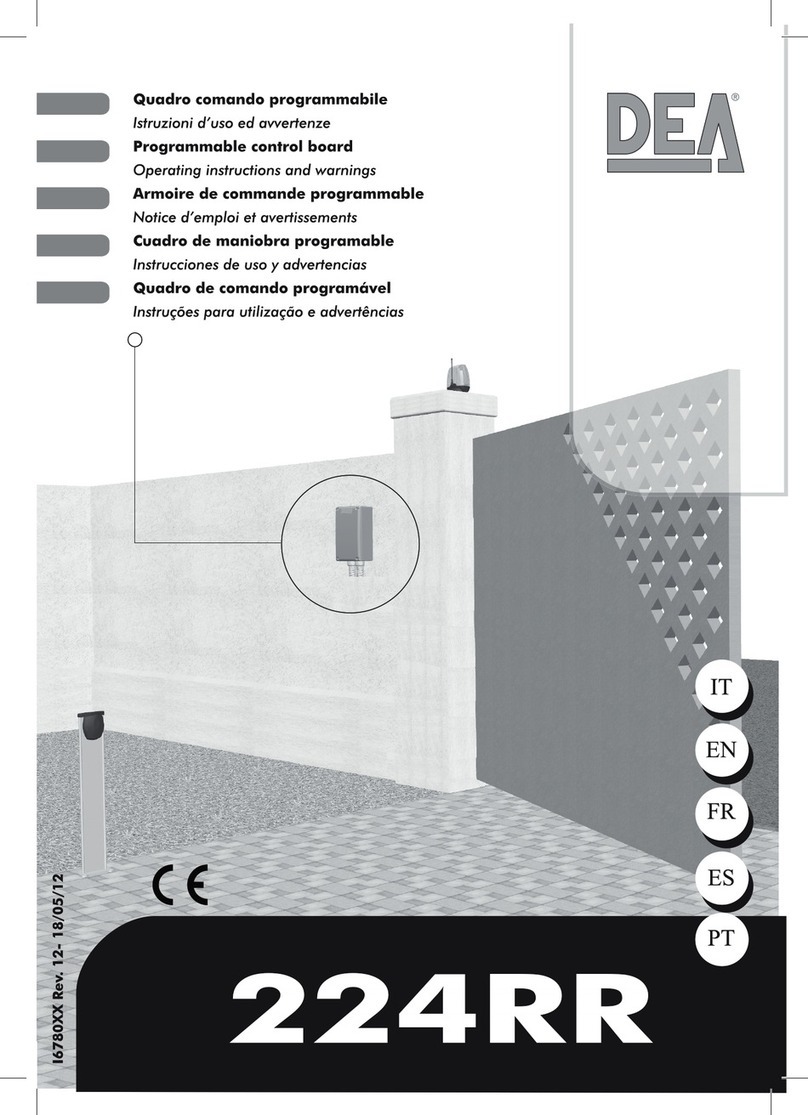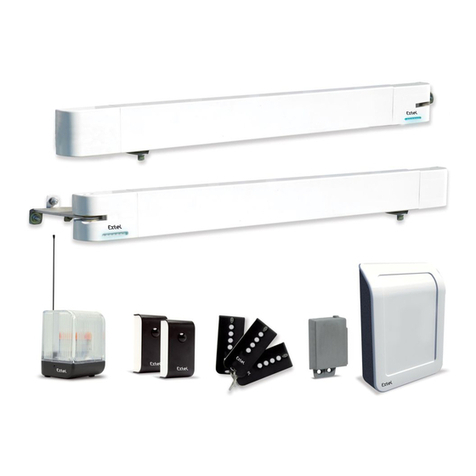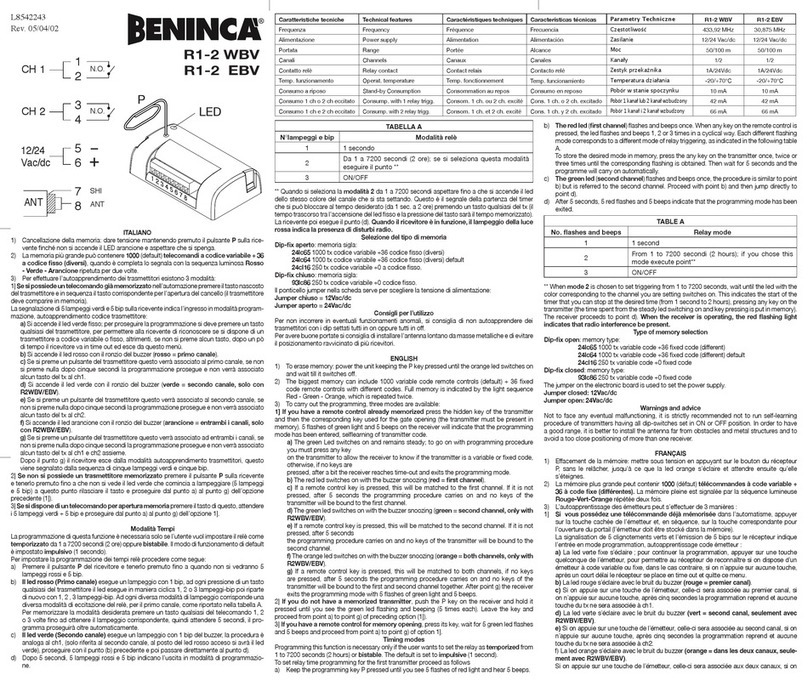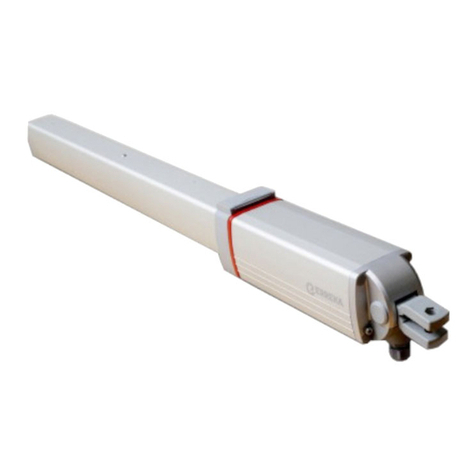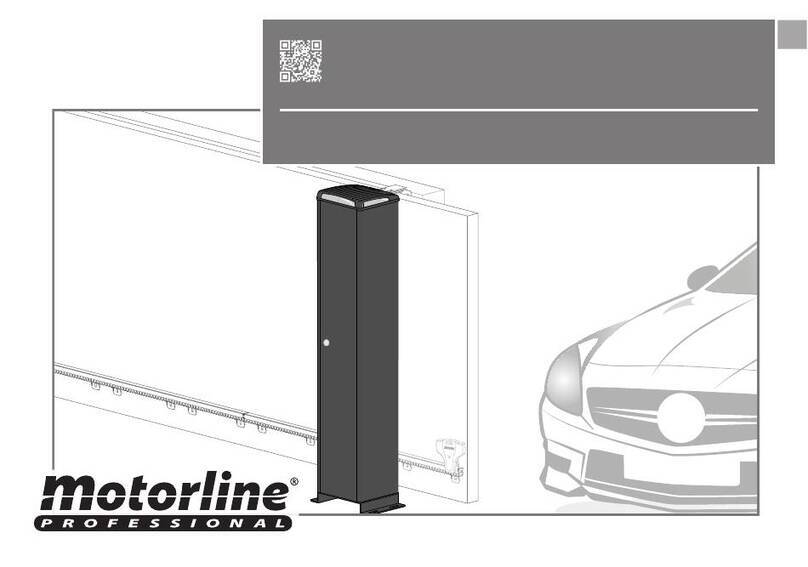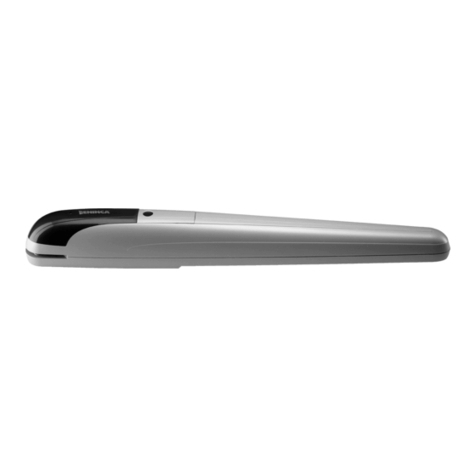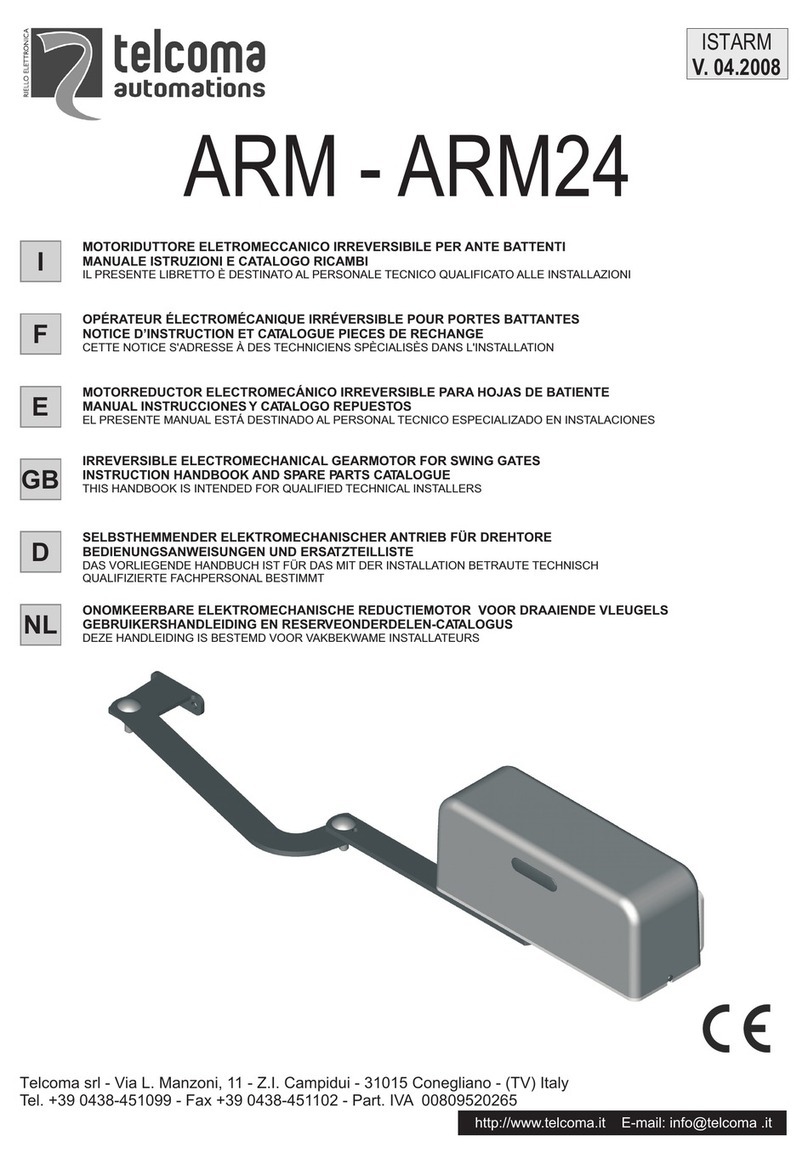OLI 600
Istruzionid’usoedavvertenze
4
La scelta dell’automatismo va chiaramente fatta in funzione
del cancello da movimentare; l’attrito degli attacchi, il peso, la
lunghezza/altezza dell’anta, il grado di chiusura della superficie
sono gli elementi da considerare. Presentiamo sotto un grafico
indicativo che può essere d’aiuto per situazioni tipiche che mette
in relazione la lunghezza dell’anta con il suo peso.
ATTENZIONE L’utilizzo del prodotto in condizioni anomale
non previste dal costruttore può generare situazioni di perico-
lo; rispettare le condizioni previste dalle presenti istruzioni. A1
4.5. Istruzioni per eseguire senza rischio
4.5.1. Trasporto
OLI 600 è sempre fornito imballato in scatole che forniscono
una adeguata protezione al prodotto; fare comunque attenzione
a tutte le indicazioni eventualmente fornite sulla scatola stessa
per lo stoccaggio e la manipolazione.
Se si rendesse necessario per qualsiasi motivo il reimballo
ed il trasposto del prodotto dopo la sua installazione prestare
particolare attenzione alle possibili perdite d’olio dalla leva di
sblocco. Per evitare ciò controllare la presenza ed il corretto
posizionamento della guarnizione OR di tenuta sul gruppo ma-
niglia (vedi A in F5 pag. 30).
4.5.2. Installazione, montaggio e smontaggio
ATTENZIONE Qualsiasi operazione d’installazione, manu-
tenzione, pulizia o riparazione dell’intero impianto devono
essere eseguite esclusivamente da personale qualificato;
operare sempre in mancanza di alimentazione e seguire scru-
polosamente tutte le norme vigenti nel paese in cui si effettua
l’installazione, in materia di impianti elettrici. A3
Per una soddisfacente posa in opera del prodotto è impor-
tante:
• definireilprogettocompletodell’aperturaautomatica(fare
riferimento anche a “6 Assieme completo della chiusura); in
particolare, dopo aver valutato con attenzione le caratteri-
stiche dei supporti e del cancello designare tipo e posizione
degli attacchi in funzione anche dell’angolo di apertura che
si vuole ottenere (vedi F2, F3 pag. 31);
• fissaregliattacchi.
Il fissaggio degli attacchi va eseguito con particolare attenzio-
ne sia su pilastri in ferro e muratura sia su cancelli di ogni tipo.
Nei pilastri in ferro e nei cancelli, è importante valutare con
attenzione la necessità di applicare un fazzoletto di rinforzo,
questo si rende necessario soprattutto quando la struttura è
debole; per esempio, quando la lamiera è sottile o quando la
morfologia stessa del cancello è poco solida.
Nei pilastri in muratura, invece, è sempre necessario ap-
plicare un supporto a piastra saldata del tipo art. 0/652 DEA
System (vedi “3 Modelli e contenuto dell’imballo”) che viene
fissato, a seconda del tipo, annegato in una malta cementizia,
con fissaggio meccanico o con fissaggio chimico.
Proteggere bene le saldature dalla corrosione.
Fare particolare attenzione all’allineamento fra gli attacchi
ed alla loro orizzontalità. Applicare OLI 600 agli attacchi come
illustrato in F8 e F9 pag. 32.
ATTENZIONE Eseguire lo smontaggio dell’operatore dai
propri attacchi solo dopo essersi assicurati che non vi sia pres-
sione all’interno della pompa/cilindro. A4
4.5.3 Messa in funzione
Per l’installazione del prodotto è necessario eseguire opere
murarie e/o saldature e collegamenti elettrici; utilizzare attrez-
zatura adeguata al tipo di lavoro da svolgere e seguire tutte le
norme antinfortunistiche vigenti nel paese d’intallazione. Il pro-
dotto va collegato elettricamente generalemente ad una centra-
lina di comando per automatismi; fare riferimento alle istruzioni
di tale dispositivo per ulteriori informazioni. In caso si utilizzi
una centrale di comando 202RR, fare riferimento alla
procedurariportataapag.7.
Per evitare la fuoriuscita dell’olio dall’operatore durante il
trasporto e per garantire una adeguata protezione contro l’infil-
trazione di acqua nel prodotto DEA System installa una guarni-
zione OR di tenuta sul gruppo maniglia (vedi A in F5 pag. 30).
ATTENZIONE Se viene tolta la guarnizione OR di tenuta sul
gruppo maniglia ci può essere infiltrazione di acqua nel ser-
batoio dell’olio che può generare malfunzionamento e danno
al prodotto. Assicurarsi sempre che sia presente. A5
4.5.4. Impiego ed utilizzazione
Il prodotto è destinato ad essere parte di un assieme di ap-
parecchi che nel loro complesso realizzano l’automatismo del
cancello. DEA System presuppone che il suo utilizzo sia sempre
conforme a quanto prescritto dalla normativa vigente.
OLI 600 è dotato di un dispositivo di sblocco; il funziona-
mento di tale dispositivo è il seguente.
Una volta aperta la serratura posta sulla maniglia (protetta
dal coperchietto in plastica nera) la leva va azionata in senso
orario fino alla fine della sua corsa (per 90° circa); a questo
punto OLI 600 è sbloccato e il cancello, in assenza di altri im-
pedimenti è libero nei suoi movimenti. Il procedimento inverso,
rotazione della leva fino a fine corsa (per 90° circa) in senso
antiorario e chiusura della serratura (ricordarsi di proteggere
la serratura con l’apposito coperchietto), riporta OLI 600 in
condizioni di lavoro.
ATTENZIONE Il tappo di chiusura del profilo a protezione
dello stelo (vedi punto 1 in F1 pag. 30) è stato progettato per
garantire la sicurezza contro lo schiacciamento delle dita. In
nessun caso alterare tale dispositivo, per esempio fissandolo
con viti. Può essere pericoloso! A6
4.5.5. Regolazione
La pompa è dotata di una coppia di valvole per la rego-
lazione della portata in apertura e chiusura. Per accedere alla
regolazione è necessario togliere le due viti di fissaggio della
leva di sblocco (vedi F5 pag. 30).
Per eliminare eventuale presenza di aria nel cilindro, dopo
aver eseguito la regolazione, effettuare un ciclo completo di aper-
tura fino a finecorsa e agire sullo sblocco manuale. Ripetere tale
operazione anche per un ciclo completo di chiusura. Eseguire
questi interventi per 2 o 3 volte. (vedere anche F12 pag. 37).
ATTENZIONE Durante l’operazione di regolazione è possi-
bile l’infiltrazione d’acqua o di altre sostanze all’interno del
serbatoio d’olio. Ciò può causare danno e malfunzionamento
della pompa. Prestare particolare attenzione a corpi estranei
nelle vicinanze e riposizionare la leva di sblocco a regolazione
avvenuta!! A7
ATTENZIONE Altre operazioni di regolazione/taratura diver-
se dalla regolazione della portata sono eseguite dal produtto-
re. L’intervento su queste può causare malfunzionamento e/o
situazioni di pericolo per persone, animali e cose. Evitare ogni
intervento non autorizzato da DEA System. A8
Grafico “LUNGHEZZA - PESO”
